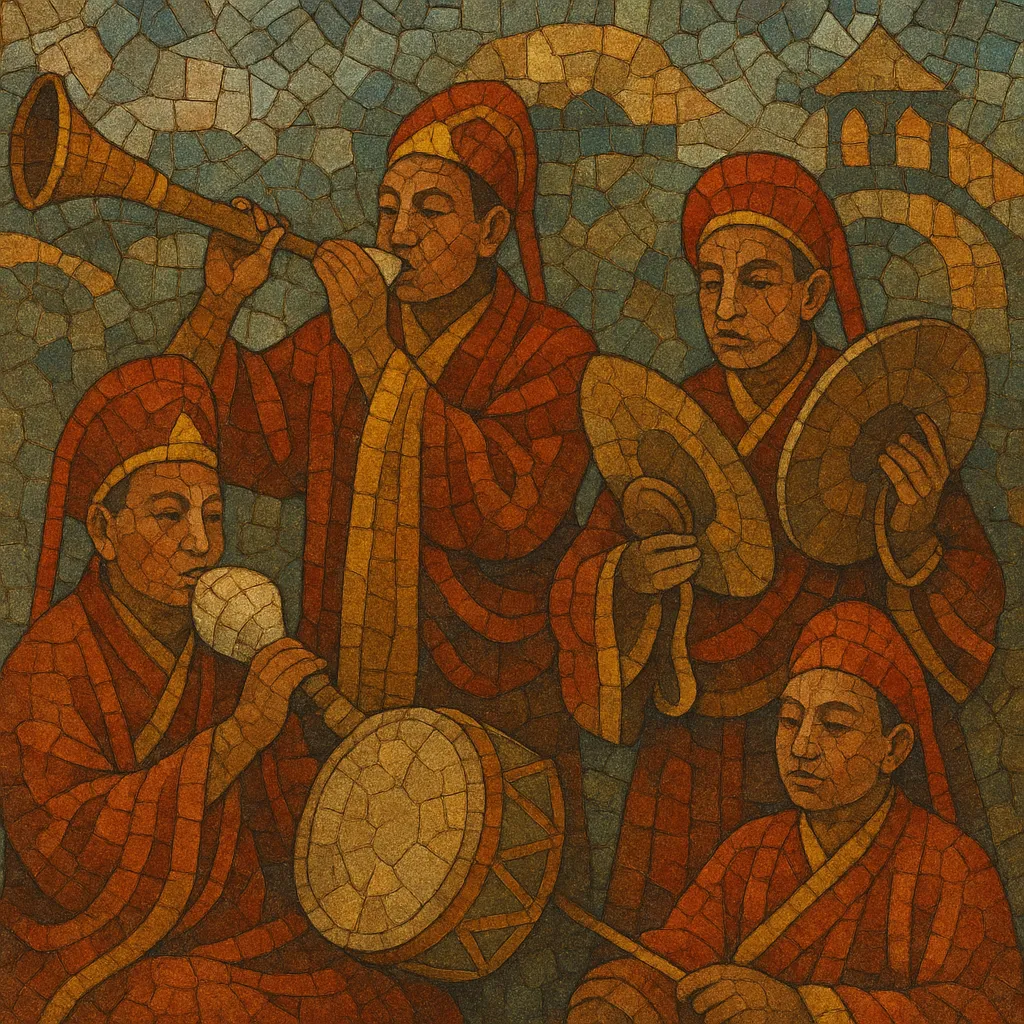Zhabdro gorgom is a Bhutanese ceremonial processional repertoire associated with monastic and courtly ritual.
It is performed for religious festivals (tsechu), circumambulation processions, and state occasions, featuring slow, stately rhythms synchronized to measured steps and ritual choreography. The sound world is defined by long natural trumpets (dungchen), double-reed shawms (gyaling), frame and barrel drums (nga), pairs of large cymbals (rolmo), and conch shells (dungkar), often supporting responsorial or unison chant. Melodic motion is modal and pentatonic-leaning, textures are predominantly heterophonic, and cadence points follow ritual cues rather than Western harmonic closure.
As a living tradition within Bhutan’s Drukpa Buddhist culture, zhabdro gorgom emphasizes grandeur, devotion, and communal participation over individual virtuosity.
Zhabdro gorgom took shape in Bhutan during the consolidation of the Drukpa Kagyu Buddhist polity in the 1600s. As monastic institutions and dzongs (fortress-monasteries) established ceremonial life, processional and step-based ritual music was codified to accompany circumambulation, blessings, and public religious festivals.
Over subsequent centuries, monastic music systems formalized instrumentation (dungchen, gyaling, rolmo, nga, dungkar), step patterns, and cueing practices. Ensembles coordinated music with masked dances (cham) and processions, reinforcing didactic Buddhist narratives and social cohesion at tsechu throughout the kingdom.
In modern Bhutan, zhabdro gorgom remains central at major festivals and state events. While the core style is conservative and transmitted orally within monastic bodies (dratshang), documentation and cultural policy have supported preservation. Occasional staged presentations adapt procession segments for concert settings, yet performance practice continues to prioritize ritual function and community over spectacle.


